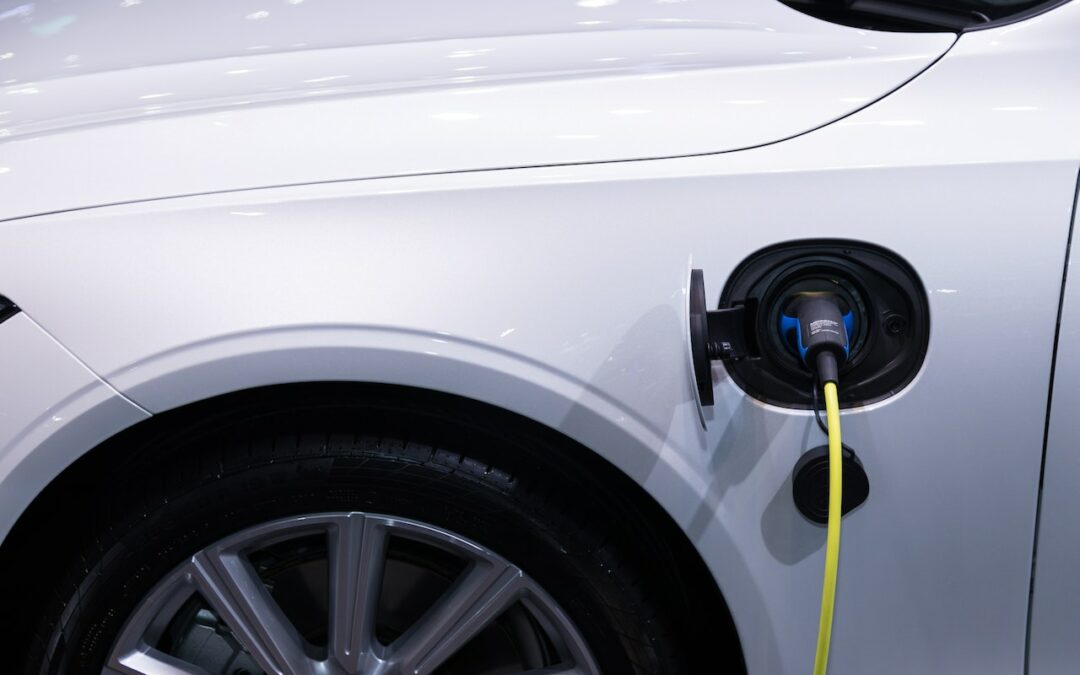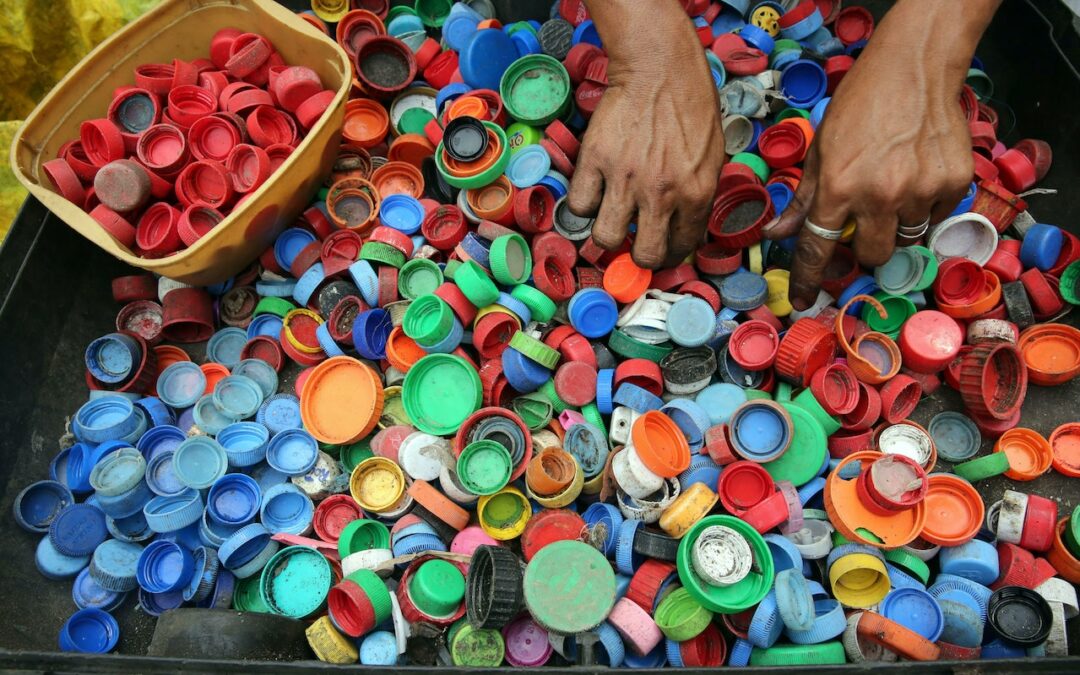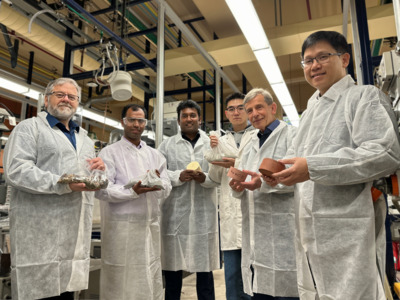
Car Deal of the Day: Vauxhall Mokka Electric is a family-friendly EV for £191 a month
Vauxhall’s Mokka Electric is a great all-round electric SUV – making it our Deal of the Day for 4 May

Vauxhall’s Mokka Electric is a great all-round electric SUV – making it our Deal of the Day for 4 May

Adam Welz’s The End of Eden is an extraordinary document of a planet under stress. Taking a deep dive into the scientific history of our planet, Welz brings the research into the moment by exploring how species around the world are being forever altered or eliminated, in ways that few people are aware. “Humans have […]
The post ‘It’s Got to Be a Fight’: Author Adam Welz on Surviving Climate Breakdown and Saving Species of a ‘Tarnished Eden’ appeared first on EcoWatch.

Back in 1970, the nation’s first Earth Day occurred. About 20 million people attended events around the nation. Wisconsin Senator Gaylord Nelson (1963 to 1981) championed Earth Day and encouraged people to fight for the environment with the same passion they had when opposing the Vietnam War. When Earth Day celebrated its 20th anniversary in 1990, […]
The post Reduce, Reuse, Recycle: Celebrating Earth Day 2024 appeared first on RecycleNation.

RMIT University engineers have created a new type of energy-efficient brick from scrap materials.
In collaboration with Australian recycling company Visy, the engineers used a minimum of 15% waste glass and 20% combusted solid waste (ash) as substitutes for clay in their bricks.
Team leader Associate Professor Dilan Robert said about 1.4 trillion bricks were used in construction projects globally every year.
“Business-as-usual brick production produces harmful emissions — including carbon dioxide, sulfur dioxide and chlorine — and puts a serious strain on our natural resources, particularly clay,” said Robert, from RMIT’s School of Engineering.
Replacing clay with waste materials in the production of the new bricks helped reduce the firing temperature by up to 20% compared with standard brick mixtures, offering potential cost savings to manufacturers.
Team leader Associate Professor Dilan Robert (third from left) with the RMIT research team behind the energy-smart bricks in a lab at RMIT University. Credit: Seamus Daniel, RMIT University.
Importantly, test results indicated that using these bricks in the construction of a single-storey building could reduce household energy bills by up to 5% compared to regular bricks, due to improved insulation.
In addition to their energy efficiency benefits, the new bricks comply with stringent structural, durability and environmental sustainability standards, with the technology meeting the key compliance requirement of fired clay bricks set by Standards Australia (AS 3700).
“Bricks play a key role in preventing energy loss from buildings,” Robert said.
“We can also produce lightweight bricks in a range of colours from white to dark red by changing our formulations.”
Dr Biplob Pramanik, the RMIT team’s environmental engineer, said the new bricks were safe to use in construction projects.
“Our bricks, manufactured from industry waste, meet state environmental regulations,” he said.
Waste glass that the team can use in their energy-smart bricks. Credit: Seamus Daniel, RMIT University.
In Victoria, Visy recycles glass packaging back into new bottles and jars. The new bricks provide a solution for the use of fines — pieces of glass smaller than 3 mm — which cannot be recycled into bottles.
Paul Andrich, Innovation Project Manager at Visy, said the company was thrilled to find a solution for material that cannot be recycled into food and beverage packaging.
“Diverting this waste into bricks with added insulation, rather than landfill, is another way we are powering the circular economy,” he said.
The researchers now plan to expand the use of their technology.
“We are focusing on scaling up the production process to facilitate the commercialisation of our innovative bricks in collaboration with brick manufacturers in Melbourne,” Robert said.
The team is also looking to collaborate with industry to explore applications of waste material in other construction products.
Their latest research has been published in the international journal Construction and Building Materials.
Top image caption: The team’s energy-smart bricks in a range of colours. Credit: Seamus Daniel, RMIT University.

Compressors and the compressed air they generate are used in a multitude of applications. However, the fact that compressor exhaust heat can be harnessed often remains forgotten.
Up to 96% of the drive energy supplied to a compressor is available for reuse — this is referred to as “heat recovery”. Heat recovery not only saves energy and costs, but also reduces the operator’s CO2 footprint.
Of course, this heat could simply be conveyed away. However, there are plenty of ways to make use of this readily available energy source that occurs as a by-product of the compression process. The simplest and most efficient method is to use the compressor exhaust heat directly, eg, for heating adjoining rooms or spaces.
Here, instead of discharging hot air from the compressed air station outside, an air ducting system directs it to neighbouring warehouses or workshops. When no hot air is required, the heated exhaust air is simply conveyed outdoors by means of a flap or louvre. A thermostatically controlled louvre enables hot air to be provided as and when required in order to maintain a constant temperature.
Heated air from the compressor can be used for effective heating of neighbouring spaces via ducting.
In addition to providing full or supplementary heating for operating spaces, hot compressor exhaust air can be used to support applications such as drying processes, generating hot air curtains or preheating burner air for heating systems. The corresponding investment costs can often be amortised within a period of one year.
Compressor exhaust heat can also be used to supply existing hot water heating and service water systems; depending on the available storage capacity, water temperatures of over 70ºC can be generated.
There are several ways to achieve this. The most cost-effective method is to use a plate-type heat exchanger integrated into the compressor, which is connected to the compressor cooling fluid circuit and transfers energy from the heated cooling fluid to the water that requires heating. Depending on whether the hot water is required for particularly sensitive production or cleaning processes, for showering and washing, or for general heating systems, special safety heat exchangers or conventional plate-type heat exchangers may be used.
These enable 70–80% of the installed compressor output to be used for heating purposes without the need for any additional expenditure on energy. This variant of heat recovery is also possible with primary water-cooled rotary screw compressors. Heat recovery is principally worthwhile when the compressors in question feature a power output of at least 5.5 kW.
Establishing actual requirement
Since very few operators know their exact air demand, it is worth conducting a compressed air audit before installing a compressor system. Performed using analysis tools such as the ADA/KESS (Air Demand Analysis/Kaeser Energy Saving System), this audit can determine the precise demand data for a project. This data can then be used to determine the planning steps for the air station operator, as well as the investment costs and potential for energy savings.
In the case of a completely new installation, optimised solutions are devised and suggested from the outset so that the operator can independently compare different system variants and select the most cost-efficient choice.
Where building management systems are used, it is recommended to conduct a thermal audit in conjunction with the compressed air audit so that the heat balance can be determined in parallel with the air consumption. This allows thermal data such as temperature flow and return to be investigated in addition to compressed air data such as volume, pressure and required air quality.
Up to 96% of the energy used to generate compressed air can be recovered.
Once these details are established, it can be determined what percentage of the compressor exhaust heat can be absorbed into the normal heat requirement of the project. This in turn allows the size of the storage vessel and the required temperature to be calculated. In the best-case scenario, 96% of the heat output can be used.
What to consider:
A few points must be taken into account when planning or optimising a compressed air station. For example, compressors and heating systems should not be placed in the same room, since optimal use of these requires different room climate conditions and the compressor must not be permitted to draw in dangerous admixtures.
The compressor room needs to be well ventilated; the room for the heating system does not. In an ideal world, the two rooms would be separate but situated near to one another, so that the ducting route between compressors and heating system can be as short as possible.
Since the volume of accumulating heat and the heat requirement are rarely identical, it is important to ensure that there is sufficient thermal storage potential in the form of large vessels. This guarantees optimum supply when generation and consumption volumes differ.
Air- or water-cooled compressors?
Once the design has been decided, it is vital to select the correct compressors. In general, two different cooling methods are available for compressors: air cooling and water cooling.
In the case of the former, air ducts with thermostatically controlled flaps convey the hot exhaust air directly from the compressors to the neighbouring operating spaces. To minimise heat losses, the distance the exhaust air needs to travel from the compressor to the point of use should not be too far.
Even if it is not required year-round, heat recovery with this type of system pays dividends: the required investment for heat recovery is relatively low and can usually be amortised within just a year. Systems equipped with additional hot water heat recovery can supply water at temperatures up to 70ºC throughout the year, and even higher if needed.
In the case of water-cooled compressors, the user-end requirements and cooling water costs also play an important role; in principle, however, heat recovery as described above can also be achieved here by means of a second connected circuit.
Summary
Heat recovery can significantly increase the efficiency of a compressed air system and reduce environmental damage by preventing emissions of greenhouse gas.
For more information about KAESER heat recovery, visit: au.kaeser.com/products/rotary-screw-compressors/heat-recovery.
Top image caption: Heat recovery station. Image courtesy of Kaeser Compressors Australia.